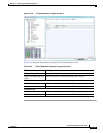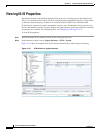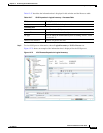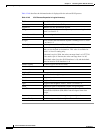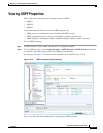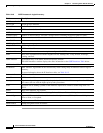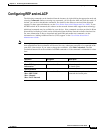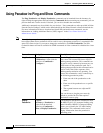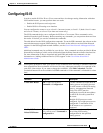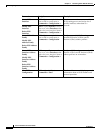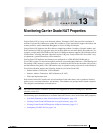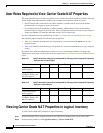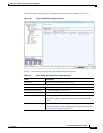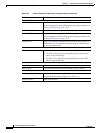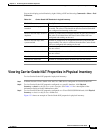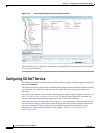
12-121
Cisco Prime Network 4.0 User Guide
OL-29343-01
Chapter 12 Monitoring Carrier Ethernet Services
Configuring IS-IS
Configuring IS-IS
In order to enable IS-IS for IP on a Cisco router and have it exchange routing information with other
IS-IS enabled routers, you must perform these two tasks:
• Enable the IS-IS process and assign area
• Enable IS-IS for IP routing on an interface
You can configure the router to act as a Level 1 (intra-area) router, as Level 1-2 (both a Level 1 router
and a Level 2 router), or as Level 2 (an inter-area router only).
The IS-IS commands helps you to configure the IS-IS on a Cisco router. These commands can be
launched from the logical inventory. Before executing any commands, you can preview them and view
the results. If desired, you can also schedule the commands.
The table below lists the IS-IS configuration commands. To run the ISIS commands, the software on the
network element must support ISIS technology. For details on the software versions Prime Network
supports for the ISIS supported network elements, see the Cisco Prime Network 4.0 Supported Cisco
VNEs.
Additional commands may be available for your devices. New commands are often provided in Prime
Network Device Packages, which can be downloaded from the Prime Network software download site.
For more information on how to download and install DPs and enable new commands, see the
information on “Adding Additional Device (VNE) support” in the Cisco Prime Network 4.0
Administrator Guide.
Note You might be prompted to enter your device access credentials while executing a command. Once you
have entered them, these credentials will be used for every subsequent execution of a command in the
same GUI client session. If you want to change the credentials, click Edit Credentials. The Edit
Credentials button will not be available for SNMP commands or if the command is scheduled for a later
time.
Command Navigation Description
Create ISIS Router ISIS > right-click System >
Commands > Configuration
Use this command to create an IS-IS
routing process and specify the area
for each instance of the IS-IS routing
process. An appropriate Network
Entity Title (NET) must be
configured to specify the area address
for the IS-IS area and system ID of
the router.
Multiple IS-IS processes can be
configured. Up to eight processes are
configurable. A maximum of five
IS-IS instances on a system are
supported.
Modify ISIS Router
Delete ISIS Router
ISIS > System > right-click Process
ID in content pane > Commands >
Configuration >
Use this command to modify or delete
an exisiting IS-IS routing
configuration for the specified
routing process.



